The Instant Pot Burn Message: What to Do and How to Avoid It in the Future
The Instant Pot burn notice can be flustering, but you can often save your meal! Here’s what to do when you see the Instant Pot burn message, and how to save dinner in any electric pressure cooker!

There you are, in the middle of making a tasty meal, when suddenly you get the “Burn” notice. Uggggggh….
We’re here to let you know what to do when you see the Instant Pot Burn notice and how you can save your dinner.
Click here to skip down to where we talk about how to avoid it in the future.
Interested in having us teach you how to start cooking in your Instant Pot?
Our live Instant Pot 30-Day Jumpstart beginners course is OPEN for enrollment! Classes start January 10, 2022.
Click here for details and learn how to register.
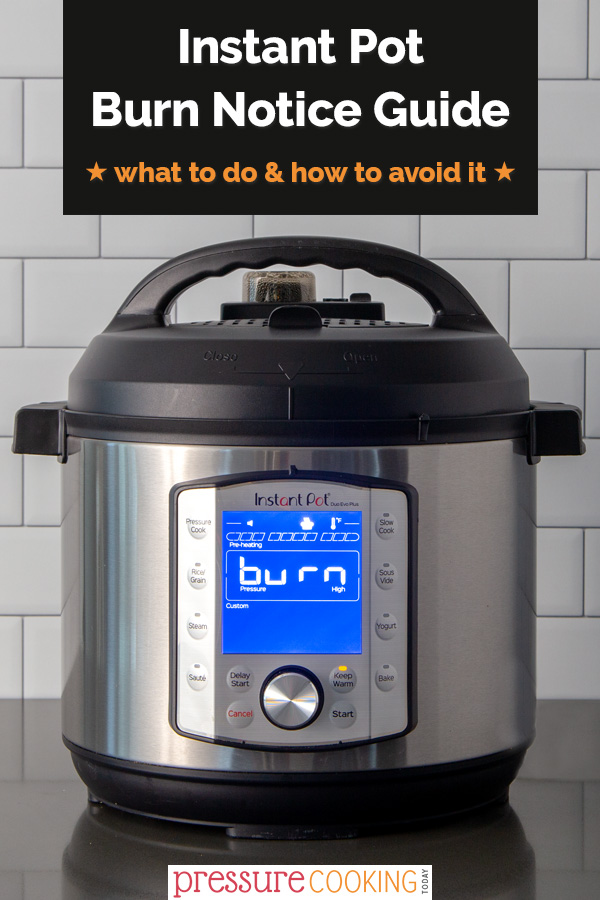
What Is the Instant Pot Burn Notice?
Depending on the model you have, your Instant Pot may have one of the following warnings: OvHt / BURN / FOOD BURN.
While this warning can be alarming, the good news is that your meal is usually fully salvageable.
Why Does the Burn Notice Appear?
Usually, when you see a burn warning on your pressure cooker, it means that the sensor inside the pot detects a temperature that’s too high. It doesn’t necessarily mean anything is burning.
Remember, your Instant Pot doesn’t know what’s actually happening inside. The burn warning is more of a nudge to tell you to peek inside the pot.
You’ll see the burn warning for one of four primary reasons:
- The cooking pot is not properly positioned inside the pressure cooker housing
- The interior temperature is too high
- There is not enough liquid in the pressure cooking pot
- Food on the bottom of the pot or between the pot and the appliance is blocking heat dissipation
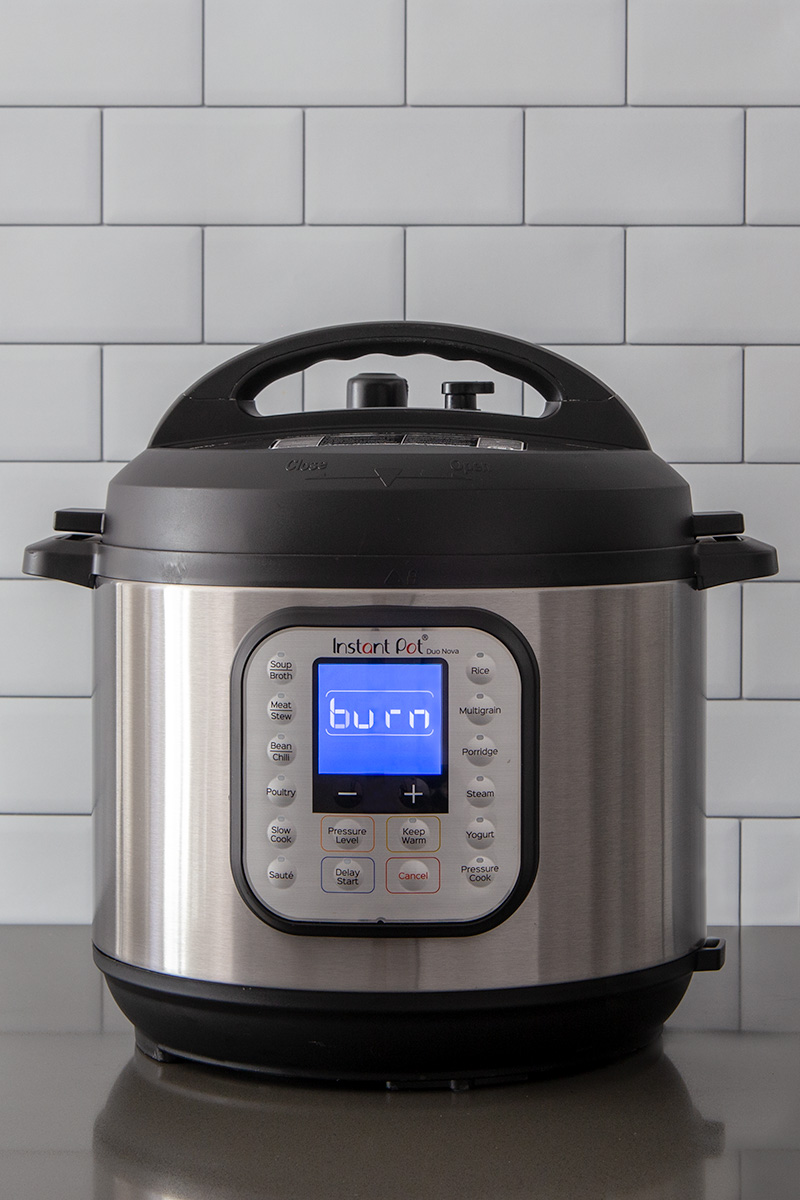
What to Do When the Instant Pot Says Burn
DON’T PANIC! In many cases, you can still save your meal, even after the burn notice appears.
As soon as you see the burn notice, press Cancel, and immediately use a quick pressure release.
If a lot of liquid or foam starts to rise up, close the steam release valve again, wait a minute, then try another quick pressure release. Repeat as needed until the float valve drops.
IMPORTANT: Before removing the lid when cooking high fat or ingredients with thickeners, pick your pressure cooker up about an inch off the counter and put it down firmly. (This will bring any air bubbles to the surface, so they won’t pop or spray when you open your pressure cooker.)
Then carefully remove the lid and remove the cooking pot from the housing.
At this point, check the bottom of the pot to get an idea of what’s going on.
If There’s Burned Food in the Pot
If you think there’s just a little burning on the bottom of the pot, transfer the food to another dish. Take care to scrape only the unburnt food into the pot. (Usually, the sensors catch burning before there’s very much.)
Once you’ve removed the food, you’ll need to clean the bottom of the pot.
If you’re using an Instant Pot or another brand with a stainless steel cooking pot, use a strong spoon to scrape dried or burnt food off the bottom of the pot.
However, if there’s a lot of burning, the flavors may have gotten into the remaining food. You may also need to soak and scrub the pot.
If the Pot Is Clean
If the cooking pot is clean, check for debris (rice grains, for example) between the pot and the Instant Pot housing.
Also, check the outside of the pressure cooking pot. Note that it will be hot inside the housing. You may need to let it cool before cleaning.
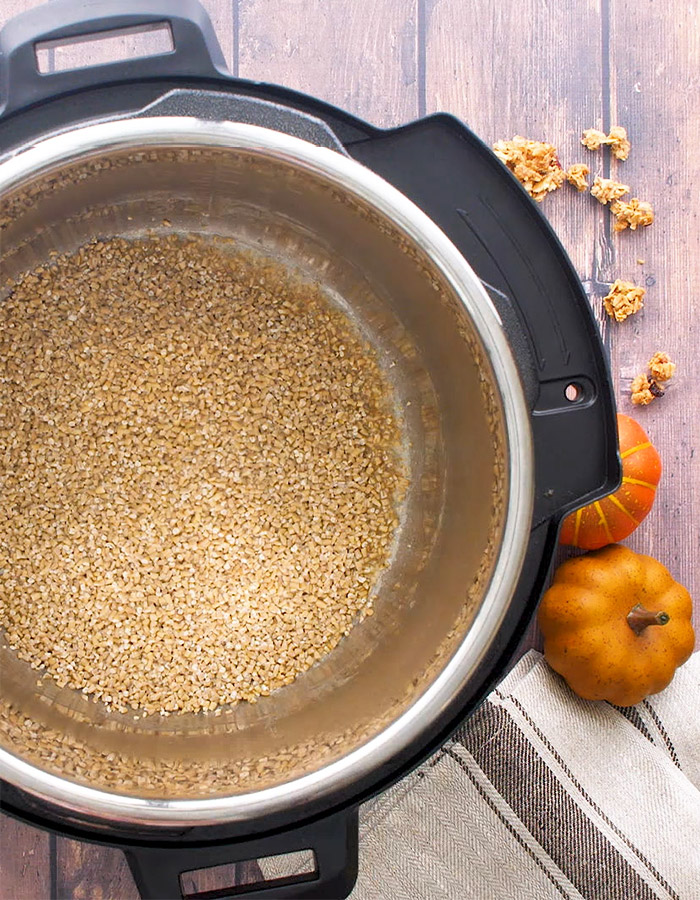
How to Finish Cooking After the Burn Notice
Finishing your meal after a burn notice will depend on where you were in the cooking process and the ingredients.
TIP: If you get the burn notice while cooking any ingredients that contain thickeners (like canned soups or pre-packaged spaghetti sauces), you will likely get the burn notice again if you try to pressure cook it.
In these instances, I recommend using Sauté mode to finish your meal. Stir constantly like you would when cooking on the stove.
It will take longer to finish but will be much quicker than getting the burn notice multiple times.
If There’s No Burning
If the bottom layer was a little dry, but not burnt, then you might just need to add more liquid, give the pot a good stir, and try again. There’s no exact formula for how much more time to add—just use your best guess.
Large Cuts of Meat
If you’re making a large cut of meat like a roast, cut away any burnt parts. Then place the meat on a low trivet and continue cooking.
Quick-Cooking Dishes
If you were right at the beginning of a quick-cooking dish like pasta, it may be better to just transfer the contents to the stovetop and finish on the stove.
My favorite way to save a quick-cooking, starchy dish like pasta or oats is to transfer the food to another pot and place it on a trivet inside the Instant Pot. A 3-quart Instant Pot cooking pot fits perfectly on a trivet inside of the 6-quart pot, for example.
If There’s Significant Burning
If the bottom of the pot turned black or there was significant burning, your food may have absorbed that burnt flavor.
Unfortunately, there’s not much to be done to save a burnt-tasting meal.
Just be sure to check that your pot is well cleaned, properly positioned, and contains enough liquid next time.

Burn Notice on the Instant Pot Duo Evo Plus
This newer Instant Pot model has a higher wattage (1200 vs 1000 in other models). It also cooks hotter, which means that recipes not written specifically for the Evo might need more liquid than in other versions.
This is especially true when you’re making meals with thickeners or canned ingredients, like Instant Pot Pumpkin Pie Steel Cut Oats or Instant Pot Spaghetti and Meatballs.
When I make these sorts of recipes in my Evo, I will either add more water and then saute at the end to cook off any extra sauce. Or, I’ll place all the ingredients in a 3-quart Instant Pot cooking pot and cook them pot-in-pot.
🎉 If you’re a new Instant Pot or electric pressure cooker owner, congrats! And get ready to enjoy nutrition-packed, quick, easy, and delicious meals in minutes.
Before you dive in, I’ve put together a helpful getting started guide that will set you up for success in the kitchen.

How to Avoid the Burn Notice in the Future
No one likes to receive a burn notice during pressure cooking! But it happens.
I’ve been using electric pressure cookers for a decade now, and I still get the burn notice every once in a while. (At this point, it’s usually because I’m using a new model of pressure cooker or I got distracted while cooking and measured liquid incorrectly.)
Of course, it’s easiest and least stressful to just avoid the warning altogether!
Here are some important steps you can take to avoid the burn notice when pressure cooking at home:
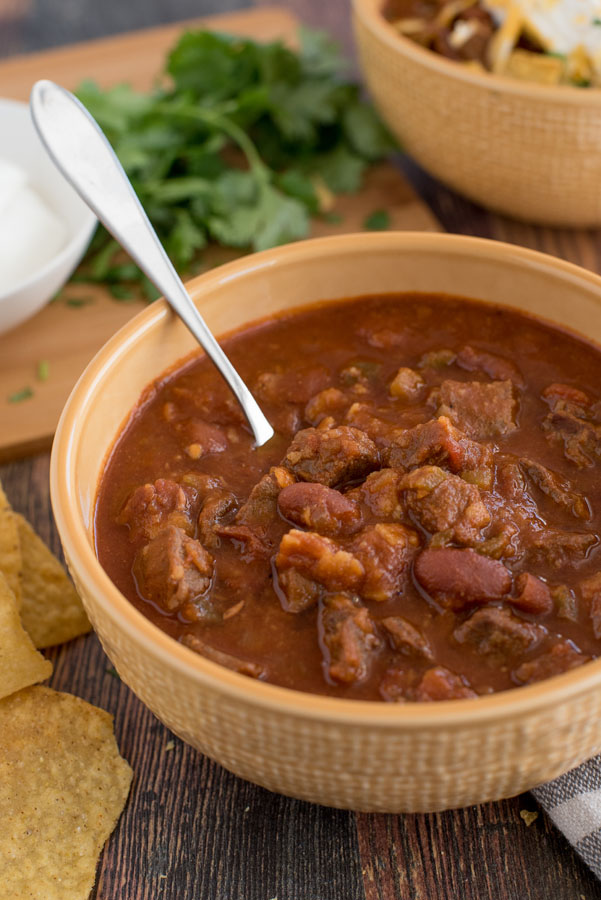
Follow a Tested Recipe
The first key to avoiding the burn warning is to follow a well-tested recipe!
All of the recipes on Pressure Cooking Today are carefully developed for 6-quart pressure cookers to ensure they contain enough liquid for flavorful pressure cooking every time, no burn notice in sight.
If you’re using an 8-quart or larger pressure cooker, you may need to add more liquid than recipes call for to allow the pot to come to pressure and cook properly.
TIP: Since pressure cookers have exploded in popularity, there is no shortage of recipes online.
You can tell when a recipe is good when it avoids or layer thickeners, dilutes or delays dairy, and calls for deglazing the pan with a liquid after browning meats or sautéing vegetables.
Trusted Sites: Over the years, I’ve come to trust a certain number of sites for their pressure cooking recipes. Here are some of my favorites to recommend:
- Tidbits has great Instant Pot family meals like Chipotle Peach Ribs and a great mix of healthier, low-sugar options like Horchata and some all-out decadent desserts like Instant Pot Angel Food Cake.
- Paint the Kitchen Red offers some amazing international meals like Beef Curry as well as stateside favorites like Pasta in a Tomato Cream Sauce.
- Kalyn’s Kitchen has Keto, South Beach, Low-Carb, and Gluten-Free options. Her vegetable recipes like her steamed artichokes are my go-to when I’m eating healthier. And her dinner options often also incorporate more veggies, like with her Spicy Chicken Lettuce Wrap Tacos.
- TwoSleevers is another reliable source for weeknight meals like Ground Beef Casserole with Rice & Beans and international recipes like Shrimp with Tomatoes and Feta. She also has some great Keto options as well.
If you’re new to pressure cooking, don’t start your pressure cooking journey with a burn notice! Use these tested beginner recipes to have a delicious and burn-free first week with your new Instant Pot!
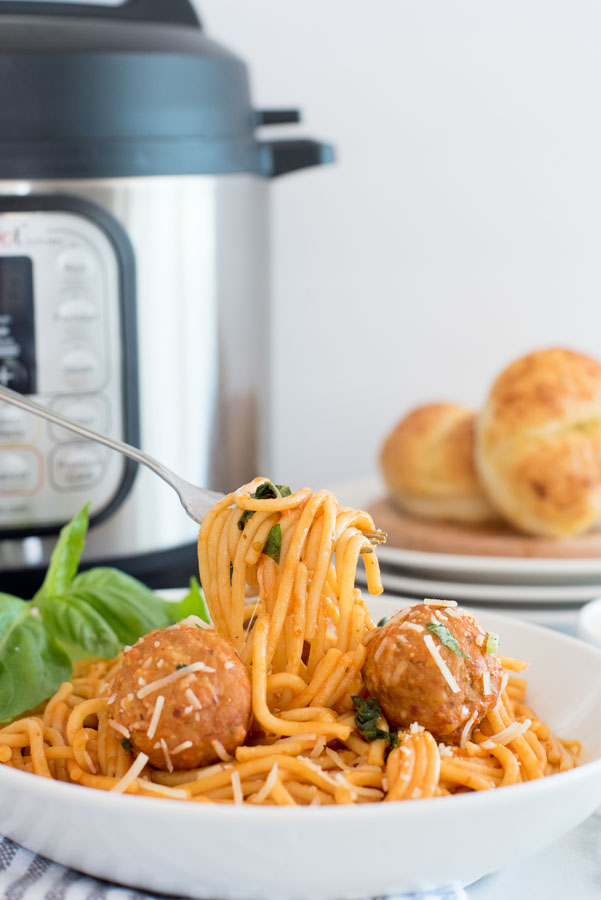
Avoid Thickeners Before Pressure Cooking
For any dish with a thickener, such as a sauce, gravy, or soup, it’s best to thicken after cooking.
Your Instant Pot needs enough liquid to come up to pressure, and thickeners like cornstarch and flour absorb too much of that liquid and settle to the bottom in a layer.
So skip flouring your meat before browning it!
Instead, after pressure cooking, make a slurry with flour (or cornstarch) and water and whisk it into your dish. Then use the Sauté function to return the dish to a simmer and watch your sauce thicken up beautifully. My easy Beef and Broccoli recipe is a great example of this technique.
Thickeners can also appear in unexpected places, like in syrups and jarred sauces (especially tomato sauces). These can settle to the bottom of the pressure cooking pot and cause a burn notice.
When using these ingredients, it is super important to dilute them with another clear liquid (broth, water, or juice) or layer them so that the ingredient with the thickener is suspended on top of other ingredients. (See my Spaghetti and Meatballs recipe for an example.)
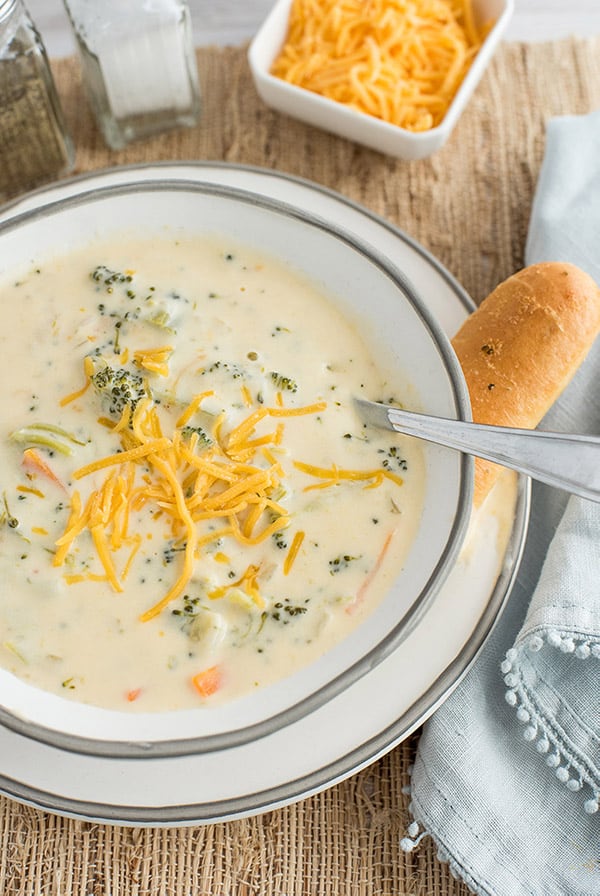
Dilute or Delay Dairy Products
If added before pressure cooking, dairy products like heavy cream, yogurt, milk, and cheese can settle or sometimes even curdle.
(I once ruined a batch of Lemon Berry Risotto when I was out of almond milk and tried to sub the 2% milk I had on hand—just don’t do it!)
When dairy ingredients make up a major element of your recipe, they need to be added after pressure cooking.
For example, we add dairy after pressure cooking to make
- the heavy cream sauce in Chicken Lazone
- the cheesy sauce in Macaroni and Cheese
- the broth in my Instant Pot Broccoli and Cheddar Soup
When dairy isn’t the star of your recipe, you can add it beforehand as long as it is sufficiently diluted.
💡 As a rule of thumb, if you’re diluting your dairy, I recommend staying at a 1:4 ratio or less and using heavy cream. (So 1 cup or less of heavy cream to 4 cups clear liquid, as in our Strawberries and Cream Steel Cut Oats recipe.)
Scrape the Pot Well After Browning
You can still enjoy the crisp, caramelized sear on braised meats and avoid the burn warning with a few easy steps.
Browned vegetables and meats release juices that caramelize on the bottom of the pot and add tons of flavor to sauces and gravies.
After searing, add a clear liquid such as broth, juice, or even plain water to deglaze the pot. Then scrape up all the browned bits stuck to the bottom or sides of the pot.
Not only will this add rich, deep flavors to your dish, but it will also keep the burn notice at bay.
💡 Tip: When searing meat, the bits on the bottom of the pot (called the fond) should be golden brown to dark brown. If they turn black, your dish will taste burnt.

Avoiding the Burn Notice When Adapting Your Favorite Recipes
After you’ve been pressure cooking for a while and are familiar with how the process works, you’ve got the green light to start converting your favorite recipes to pressure cooker recipes.
For best results, I generally like to find an existing pressure cooker recipe with a similar main ingredient or cook time as a template and then adjust from there.
For example, when I was converting my Rosemary Cashew Chicken recipe, I used my Cheesy Chicken and Broccoli recipe as a starting point. Since both recipes feature diced chicken and cheese sauces, their cook times are similar.
At the end of the day, the pressure cooker burn notice doesn’t have to be alarming, though it’s best avoided.
I hope these tips help you avoid future Instant Pot burn notices. Happy pressure cooking!
FOR MORE FROM PRESSURE COOKING TODAY
🥘 Browse our collection of the best pressure cooker / Instant Pot recipes.
💬 Follow Pressure Cooking Today on Facebook and Instagram for the latest updates.
👥 Join our Electric Pressure Cooker Facebook Group. Our positive community of pressure cooking fans use all brands of electric pressure cookers, so it’s a great resource if you have questions about your particular brand.
🥧 If you’re interested in more than just Instant Pot recipes, follow us at Barbara Bakes. There we post amazing breakfasts, breads, and the best dessert recipes!


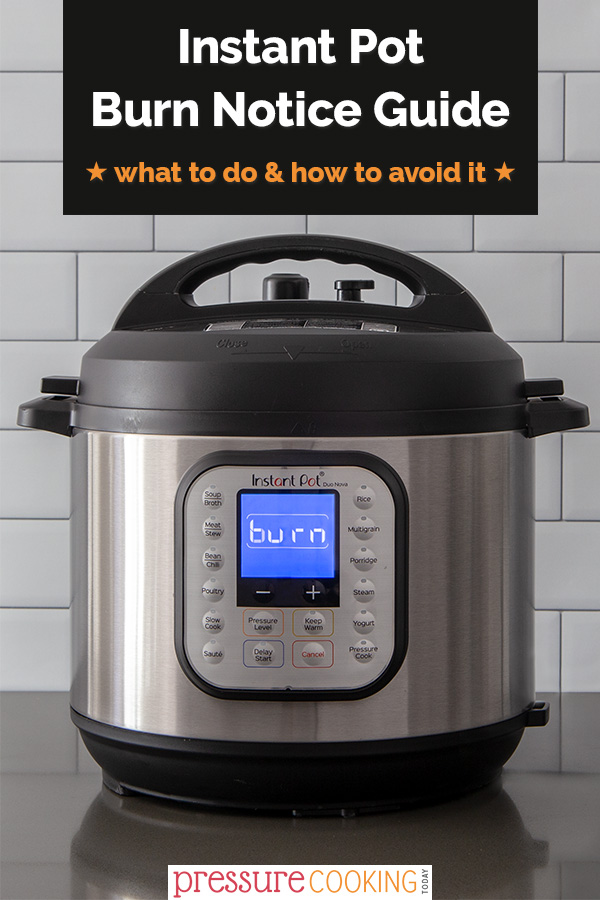
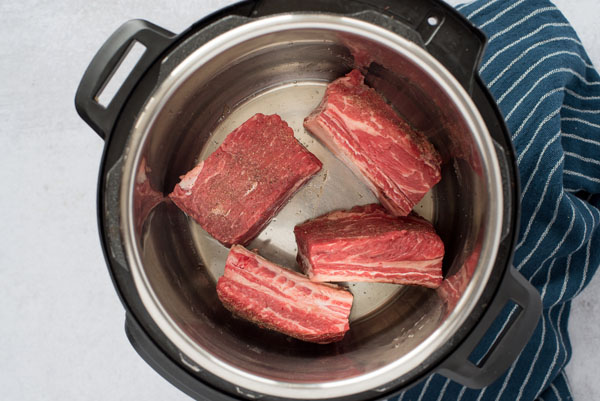





I desperately need some good vegan recipes that use just real whole food ingredients for my pressure cooker. I’ve come across too many that are not very good at all. I can’t understand people publishing recipes that they clearly did not actually make. I have found your recipes to be spot on every time! But I need some with zero animal products in them. I’m hoping you develop some soon!
Thanks DJ – so nice to hear you enjoy our well-tested recipes! We do need more vegan recipes on our site. Until then, here’s a link to a blogging friend’s vegetarian recipes https://triedtestedandtrue.com/vegetarian-instant-pot-recipes/
I can’t find any help when it comes to my instant never going from on to cook and burning my food with NO burn notice at all. Everyone keeps talking about this burn notice that isn’t happening for me – that would be a non-issue. What do you when you’re not getting a warning but your food is uncooked on top after an hour and completely burned to the bottom?
Hi Jennie – that’s frustrating. What recipes have you tried? It sounds like your Instant Pot may be defective. Have you reached our to Instant Pot customer service? 1-800-828-7280
Hi! I just got an 8 quart instant pot duo. I’ve been using a 6 qt for years and love it. I’ve been getting burn notices EVERY TIME I cook with the 8 quart. Nothing is burning, the pot is situated correctly, there is plenty of liquid (pot is 1/2 full with a soupy curry and cauliflower, for example). These same recipes worked great in the 6qt. If I add any extra water, won’t it be watery? I’m beginning to think I should take it back… any other ideas before I try to trade it in?
Hi Ashley – sounds like it isn’t functioning properly I would contact Instant Pot.